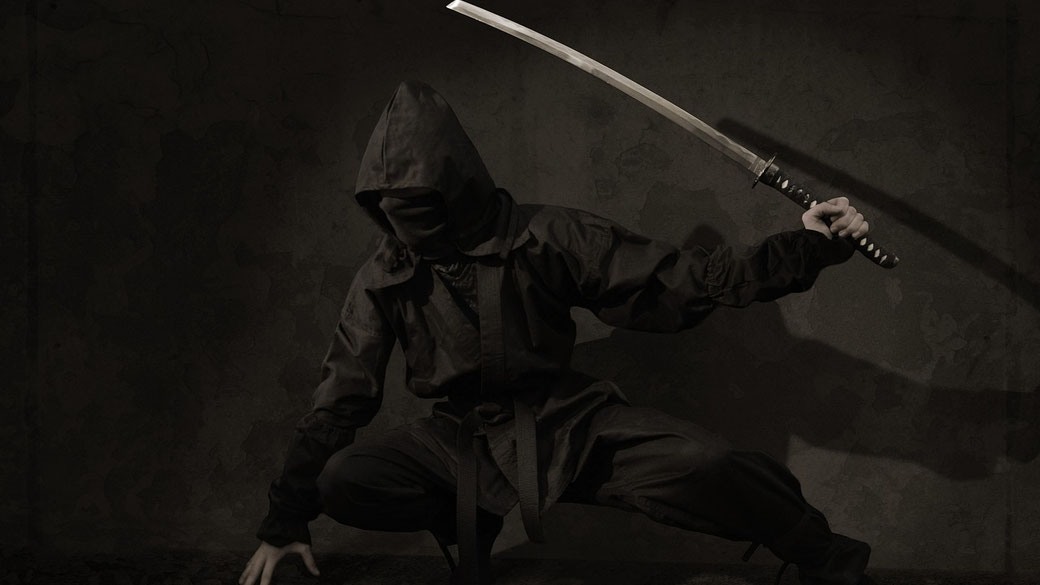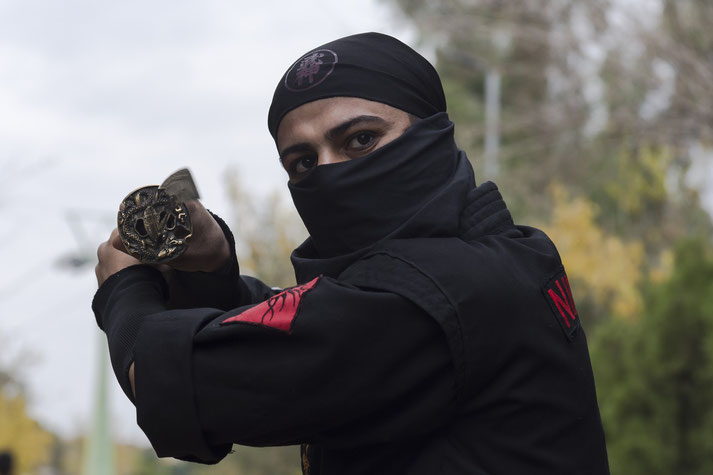Unmasking the myth: The true history of ninjas

Popular culture often portrays ninjas as black-clad assassins who could vanish without a trace and kill silently with throwing stars and swords.
Stories describe them as almost supernatural warriors who possessed mystical abilities, and films, comic books, and video games during the twentieth century shaped this modern image.
Historical evidence, however, shows that ninjas were human agents who performed espionage, sabotage, and occasional assassination for powerful lords during periods of civil war in Japan.
The Origins of Ninjas
The origins of ninjas date to the fourteenth century during the Nanboku-cho period, when Japan entered an era of near-constant civil war that created demand for specialised agents.
Rival imperial courts and competing samurai clans fought for control, and lords required agents who could infiltrate enemy defences and gather intelligence without detection.
Ninjas, known historically as shinobi, trained in secret techniques that made them valuable in a society dominated by open warfare between mounted samurai.
Two regions, Iga and Koga, became famous for training and supplying these operatives.
Families in these mountainous provinces passed down specialised knowledge of stealth, survival, and irregular warfare, and their isolated geography allowed them to build communities that resisted outside control while offering their services to various lords.
Surviving records from the Sengoku period, which lasted from the mid fifteenth to early seventeenth centuries, show that ninjas acted as spies and scouts who played dangerous roles in the service of aspiring warlords.
Manuals such as the Bansenshukai, compiled in 1676, described methods of infiltration, escape, disguise, and information gathering in detail.
Early references to shinobi in chronicles and military documents confirm their presence on battlefields and in political intrigue.
As a result, they did not form an independent class but worked as mercenaries who provided their skills to whoever paid for their services.
Ninjas in Action
Ninjas performed a range of missions that followed the priorities of their employers and the unstable political environment of the time.
They infiltrated castles to gather intelligence on troop numbers, fortifications, and the movements of enemy commanders.
Records from the Chronicle of Lord Nobunaga mention that Oda Nobunaga employed shinobi to survey enemy positions before battles.
They also carried out arson attacks to create chaos in enemy strongholds, as fire could destroy wooden defences and force enemy troops into confusion.
On occasion, they assassinated commanders whose deaths created confusion within enemy ranks and shifted the outcome of conflicts.
Ninjas also relied on trickery and disguise to complete their missions effectively.
They dressed as monks, merchants, or farmers to move through enemy territory without raising suspicion, and they used tools that included grappling hooks, hidden blades, and small fire-starting tools.
The myth of the shuriken, or throwing star, as a main weapon came actually from later folklore, since historical records suggest that ninjas preferred practical weapons such as short swords, spears, or bows.
They worked in small groups or alone, and their success depended on secrecy and planning rather than direct combat.
Hattori Hanzo: the most famous ninja
Hattori Hanzo became the most famous historical ninja because of his service to Tokugawa Ieyasu, the future shogun who unified Japan in 1603.
Born in 1542 in Mikawa Province, Hanzo joined the Tokugawa clan as a young man and distinguished himself through both bravery and cunning in battle.
He gained the nickname Demon Hanzo for his ferocity, and sources record that he commanded Iga warriors during the late Sengoku period and that he led secret missions to protect Tokugawa interests.
Hanzo’s most celebrated act occurred in 1582 after Oda Nobunaga’s death created a power struggle.
Tokugawa Ieyasu found himself in enemy territory as rival factions scrambled for power, and Hanzo and his men guided Ieyasu through dangerous provinces back to safety by using their knowledge of terrain and stealth to avoid detection.
After Tokugawa’s eventual rise to power, Hanzo became captain of the shogun’s guards.
His reputation grew further after his death as folklore and later popular fiction turned him into a legendary figure.

The Decline of Ninjas
The unification of Japan under Tokugawa Ieyasu in the early seventeenth century removed the conditions that created demand for ninjas, as a long period of peace under the Tokugawa shogunate reduced opportunities for mercenary espionage and sabotage.
Many former ninja families integrated into ordinary society or served as retainers in more conventional roles, and their secretive skills became less relevant in a stable political order.
Occasional records mention shinobi who remained in the service of the shogunate or regional lords, but their activities diminished greatly as Japan became more centralised and controlled.
Manuals that had once been practical guides for spies turned into historical curiosities studied by later generations.
By the eighteenth century, ninjas had largely passed into legend as storytellers exaggerated their exploits for entertainment and transformed them into figures of mystery and danger.
Modern popularity
The nineteenth and twentieth centuries saw a revival of interest in ninjas through kabuki theatre, woodblock prints, and later films and novels that expanded their legend with supernatural elements.
Fictional ninjas could vanish in smoke, walk on water, or kill with a single touch, and after the Second World War Japanese cinema and television introduced these fantastical versions to global audiences.
Western comic books and Hollywood films built on these ideas and created a powerful international image of the ninja.
Manga and anime series of the late twentieth century, such as Naruto, further expanded the mythology and presented ninjas as heroic figures.
Martial arts schools around the world began to advertise “ninjutsu” training, and they often combined historical references with invented techniques for entertainment and self-defence.
The visual image of a masked figure in black became standard, even though historical ninjas often dressed to blend into their surroundings.
Why do they remain famous?
Ninjas remain famous because their story combines mystery and danger with secrecy's thrill in a way that continues to appeal to audiences.
Popular culture celebrates their ability to outwit stronger opponents through cunning and skill, and stories about their exploits create a sense of fascination with covert power.
Historical figures such as Hattori Hanzo provided the foundation for these legends, and later writers exaggerated their abilities to suit entertainment.
Today, many people are still fascinated by ninjas, and their story continues to inspire new generations.
The techniques developed by ninjas have been incorporated into modern martial arts and self-defense systems, and the ninja's legendary skills continue to be admired by people around the world.
Their enduring popularity also reflects a growing interest in Japan’s feudal past.
Samurai and ninjas represent contrasting warrior ideals, as samurai embodied honour and open combat, whereas ninjas relied on stealth and deception.
The contrast between the two created fertile ground for storytelling, and centuries of folklore and fiction transformed the historical shinobi into symbols of secrecy and danger, even though the reality of their profession was far less glamorous and far more perilous.
What do you need help with?
Download ready-to-use digital learning resources
Copyright © History Skills 2014-2025.
Contact via email
With the exception of links to external sites, some historical sources and extracts from specific publications, all content on this website is copyrighted by History Skills. This content may not be copied, republished or redistributed without written permission from the website creator. Please use the Contact page to obtain relevant permission.





